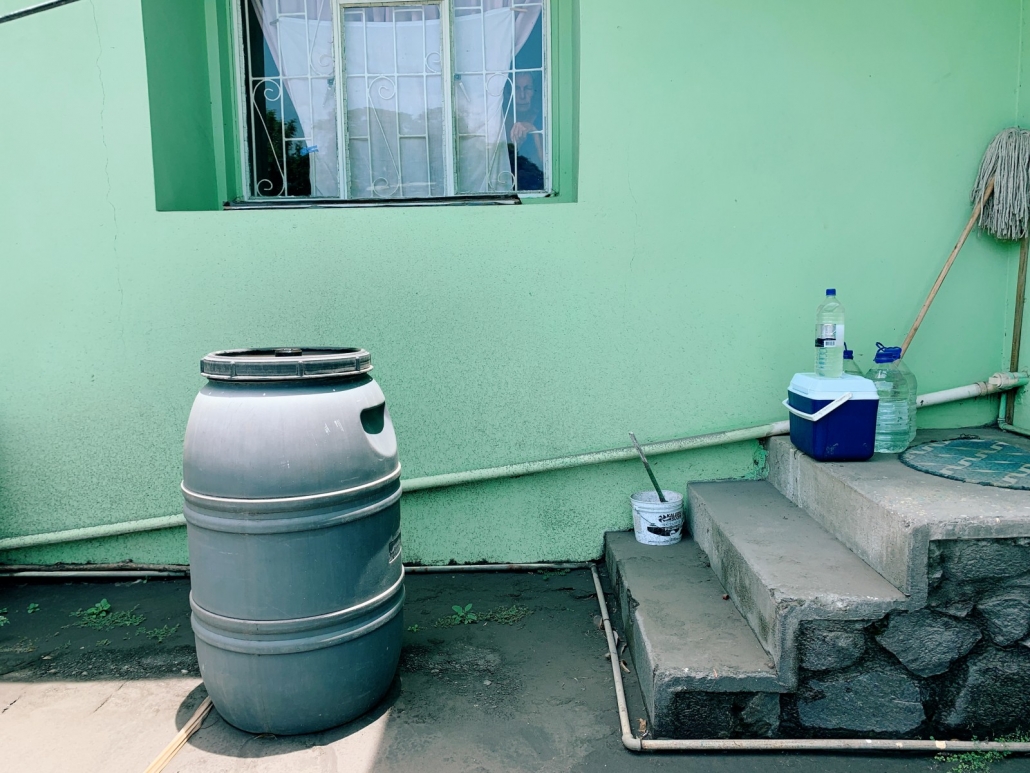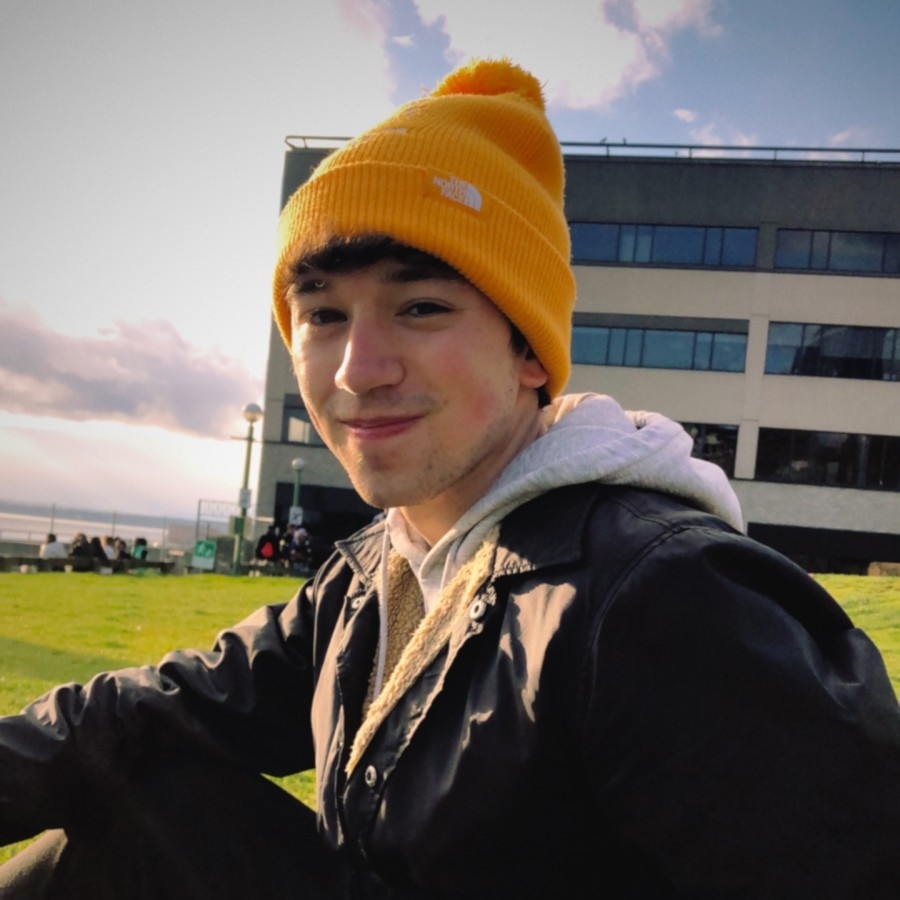Volcanic Eruptions and Water Insecurity Persist On St. Vincent

📷 © Nadia Huggins (@nadiahuggins)
Residents of the ash-covered Caribbean island scramble for clean water.
Key Takeaways
- On April 9, an 8,000 meter-long ash plume signaled the eruptive emergence of La Soufrière, the active volcano on St. Vincent, which has continued to erupt with consistent and devastating explosions.
- Clean drinking water is currently only available through saved rain barrels, sparse springs, generous neighbors, and rationed supplies from reservoirs which the government is rushing to clean of ash.
- Neighboring Caribbean islands, including St. Lucia, Barbados, and Bermuda have offered relief and refuge for what experts estimate to be 20,000 total Red Zone evacuees.
Christian Thorsberg, Circle of Blue
Heavy with ash, palm trees on the Caribbean island of St. Vincent are sagging into themselves. The trees’ vibrant green hues have turned sallow and dehydrated, their branches succumbing to the weight of the snow-like soot and dropping to the now grey ground.
Looking up today, as all of St. Vincent did two Thursdays ago, eyes trained on the island’s erupting volcano, La Soufrière, there is little else to see but blanket-thick grey and the irregular flight patterns of displaced birds. On the ground, in the towns and harbors, relief efforts are the main priority for the Caribbean country’s government and affected residents. The rushing rivers, major freshwater suppliers for St. Vincent, have been made non-potable by ashfall. Now and for the foreseeable future, clean drinking water will come by way of one’s own saved rain barrels, sparse springs, generous neighbors, and rationed supplies from reservoirs the government is rushing to clean.

Photo: Courtesy of Nadia Huggins (@nadiahuggins)
Prime Minister Ralph Gonsalves joined the United Nations on Tuesday in announcing a $29.2 million global funding appeal, for what they are calling St. Vincent’s “midnight hour of need.”
La Soufrière, the active volcano on St. Vincent and its highest peak, is located on the island’s northern end. Last active in 1979, it awoke in late December 2020 with the formation of a lava dome. On April 9, an 8,000 meter-long ash plume signaled its eruptive emergence. For the past two weeks, La Soufrière has continued to erupt, with consistent and devastating explosions.
Nadia Huggins, a photographer and artist who has been documenting the scene, was on a boat off the island’s northern coast at the time of the first eruptions. “It sounded like millions and millions of massive stones breaking together, almost like a jet, climbing and climbing,” she says. “It was terrifying to watch, and the ash cloud came down very quickly. We had to speed out.”
The eruption reverberated across the 133 square-mile island. The northern region is now a designated Red Zone, where volcanic danger is the highest and evacuations urgently advised. Even in the low-danger southern Green Zone, Huggins returned home to an uncanny soundscape of howling dogs and unrelenting ash clanging on metal roofs. Infiltrating cars, homes, and animal enclosures, the widespread ash is compounded by St. Vincent’s current dry season––ample rain isn’t expected until the mid-summer hurricane season. Huggins spent two days without running water, all while documenting the eruptions and volunteering for relief shelter runs.
“People were walking down the street aimlessly with suitcases,” Huggins says. “It was shocking to see, because you anticipate a certain level of security down there. I don’t think any zone is particularly safe.”
In an email to Circle of Blue, Susette May, an administrative officer at the Carribean Water Agency and Sewage Authority, said on Monday that 85 percent of communities were without water for two days, but that 95 percent of piped water supply had been restored.
But the speed and consistency of water restoration has looked different for St. Vincent’s many residents. “I think we have water right now?” asks Kamillo Edwards, a videographer who lives just outside the country’s capital, Kingstown, in the Green Zone on the island’s southern edge. “As of this morning we had water. Water comes and goes.”
Edwards spent five days without running water following the initial eruption. When piped supply returned, he followed the government’s recommendation to boil the water before drinking. Now, Edwards says, the boiling step is no longer necessary. Still, the village of Calder, less than eight miles away from the capital, as of Monday, was on its ninth day without restored running water. A recent trip in Calder’s direction, toward the island’s eastern side, Edwards says, was stalled by further eruptions and the “five or six inches” of ash on the ground, which are found “from the Orange Zone going up.”

Photo: Courtesy of Nadia Huggins (@nadiahuggins)
Water trucks, via the few roads that are open, continue to deliver water to more remote communities and those in the Orange and Red Zones who refuse to evacuate. Many who are staying lived through the 1979 eruptions, and despite the danger are hesitant to leave their homes and belongings behind again.
Neighboring Carribean islands, including St. Lucia, Barbados, and Bermuda have offered relief and refuge for what experts estimate to be 20,000 total Red Zone evacuees. The National Emergency Management Organization, Caribbean Disaster Emergency Management Agency, and UNICEF continue to contribute resources. The government is working to streamline the delivery of resources that are received, to those in public relief shelters.
Huggins hopes St. Vincent can look to the Grenadines, the 32 island archipelago south of the main island, for personal water storage techniques in the future, such as tanks and rain barrels. “I suspect that after this, when people are rebuilding, they’re really going to consider how they set up water systems within their homes,” she says.
Huggins is also concerned for the indigenous communities, the Garifuna, who live in the Red Zone town of Owia on the island’s northeast coast and have perhaps been hit hardest by La Soufrière, less than five miles away. She hopes that the island’s rebuilding efforts will take special care to center on their needs.
While clean and accessible water, and available shelter remain the largest challenges moving forward for St. Vincent, the mental health of his neighbors is on the mind of Kamillo Edwards as eruptions continue and uncertainty abounds.
“I don’t think anybody at all on the island is in a good headspace,” he says. “Like, nobody. The entire population needs to see a therapist. A therapist needs to see a therapist. That’s how bad this is. Everybody is affected one way or another.”
Christian Thorsberg is an environmental writer from Chicago. He is passionate about climate and cultural phenomena that often appear slow or invisible, and he examines these themes in his journalism, poetry, and fiction.













Leave a Reply
Want to join the discussion?Feel free to contribute!